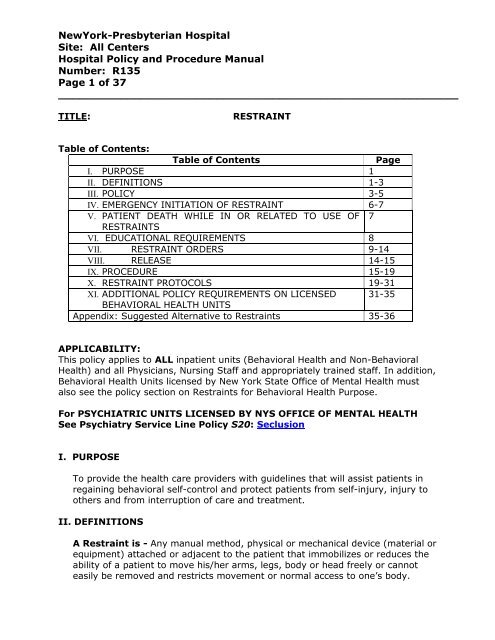
Patient Restraints Guidelines. When you monitor the patient or resident who is restrained you must observe and monitor the patient s physical condition the patient s emotional state and the patient s responses to the restraint or seclusion. The giving of physical support or assistance reasonably necessary to enable a patient to carry out daily living activities or to redirect a disorientated patient or. These considerations should be recorded in the patient s care plan. Restraints should never be used for staff convenience or client punishment.

The rn will either apply or be present to supervise the application of restraints to ensure patient safety. Except in emergencies patients should be restrained only on a physician s explicit order. The goal of using such restraints is to keep the patient and staff safe in an emergency situation. Patients should never be restrained punitively for convenience or as an alternate to reasonable staffing. Physical chemical and environmental. Physicians who order chemical or physical restraints should.
Restraint in an incapacitated adult also achieves a different goal which is to ensure that the patient remains unharmed by their own actions.
Patients should never be restrained punitively for convenience or as an alternate to reasonable staffing. The rn will either apply or be present to supervise the application of restraints to ensure patient safety. Restraint in an incapacitated adult also achieves a different goal which is to ensure that the patient remains unharmed by their own actions. Patients should never be restrained punitively for convenience or as an alternate to reasonable staffing. Physicians who order chemical or physical restraints should. Environmental restraints control a patient s mobility.